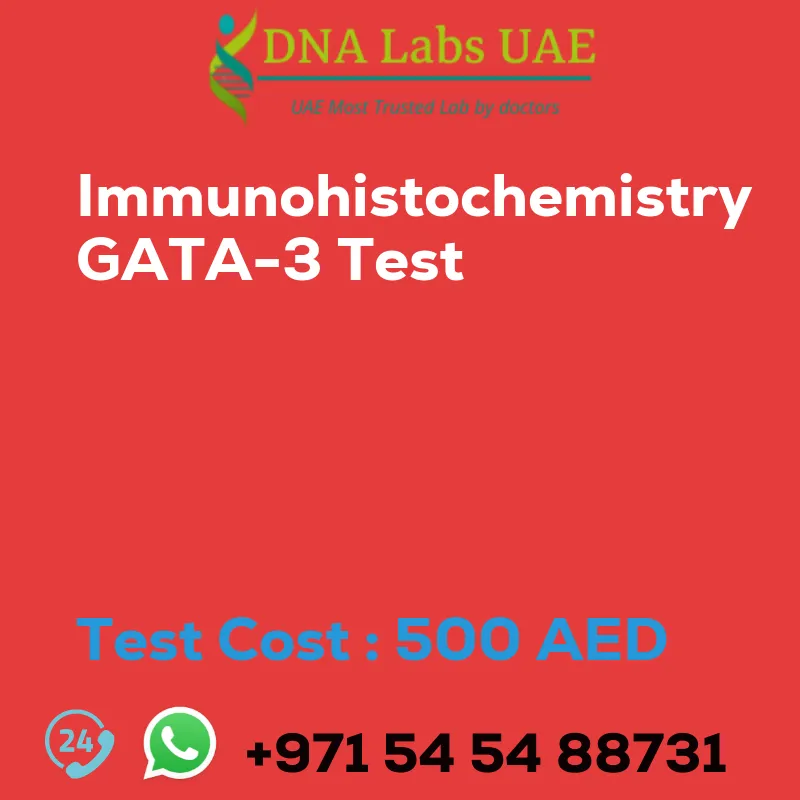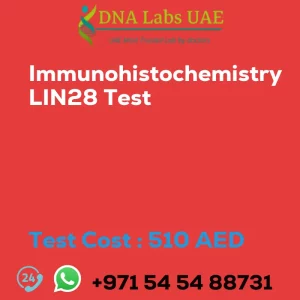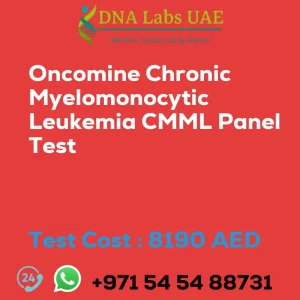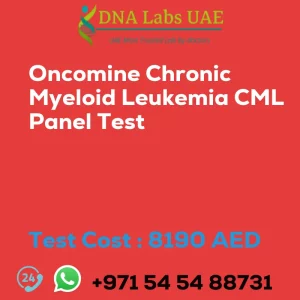IMMUNOHISTOCHEMISTRY GATA-3 Test
Test Name: IMMUNOHISTOCHEMISTRY GATA-3 Test
Components: GATA-3 protein detection
Price: 500.0 AED
Sample Condition: Submit tumor tissue in 10% Formal-saline OR Formalin fixed paraffin embedded block. Ship at room temperature. Provide a copy of the Histopathology report, Site of biopsy and Clinical history.
Report Delivery: Sample Daily by 6 pm; Report Block: 5 days Tissue Biopsy: 5 days Tissue large complex: 7 days
Method: Immunohistochemistry
Test Type: Cancer
Doctor: Oncologist, Pathologist
Test Department: DNA Labs UAE
Pre Test Information: Provide a copy of the Histopathology report, Site of biopsy and Clinical history.
Test Details
The GATA-3 test is an immunohistochemistry (IHC) test used to detect the presence of GATA-3 protein in tissue samples. GATA-3 is a transcription factor that plays a crucial role in the development and function of various organs, including the breast, bladder, and prostate.
The GATA-3 test is commonly used in diagnostic pathology to differentiate between different types of tumors, especially in cases where the primary site is unknown. It is particularly useful in distinguishing breast cancer from other types of cancer, as GATA-3 is highly expressed in breast epithelial cells.
To perform the GATA-3 test, a tissue sample (usually obtained through a biopsy or surgical resection) is fixed, embedded in paraffin, and cut into thin sections. These sections are then mounted on glass slides and subjected to a series of steps, including deparaffinization, antigen retrieval, blocking, and incubation with a GATA-3-specific antibody.
The GATA-3 antibody binds to the GATA-3 protein in the tissue sample, forming an antigen-antibody complex. This complex is then visualized using a detection system, such as a chromogen, which produces a colored stain at the site of GATA-3 expression. The stained tissue sections are examined under a microscope by a pathologist, who can interpret the results based on the intensity and pattern of staining.
A positive GATA-3 test indicates the presence of GATA-3 protein in the tissue sample, suggesting the involvement of GATA-3 in the development of the tumor. This information can help in determining the origin of the tumor, guiding treatment decisions, and predicting prognosis.
It is important to note that the interpretation of the GATA-3 test results should be done in conjunction with other clinical and pathological findings, as it is not a standalone diagnostic tool. Additionally, false-positive or false-negative results can occur, so the test should be used in combination with other diagnostic techniques to ensure accurate diagnosis and treatment planning.
| Test Name | IMMUNOHISTOCHEMISTRY GATA-3 Test |
|---|---|
| Components | |
| Price | 500.0 AED |
| Sample Condition | Submit tumor tissue in 10% Formal-saline OR Formalin fixed paraffin embedded block. Ship at room temperature. Provide a copy of the Histopathology report, Site of biopsy and Clinical history. |
| Report Delivery | Sample Daily by 6 pm; Report Block: 5 days Tissue Biopsy: 5 days Tissue large complex : 7 days |
| Method | Immunohistochemistry |
| Test type | Cancer |
| Doctor | Oncologist, Pathologist |
| Test Department: | |
| Pre Test Information | Provide a copy of the Histopathology report, Site of biopsy and Clinical history. |
| Test Details |
The GATA-3 test is an immunohistochemistry (IHC) test used to detect the presence of GATA-3 protein in tissue samples. GATA-3 is a transcription factor that plays a crucial role in the development and function of various organs, including the breast, bladder, and prostate. The GATA-3 test is commonly used in diagnostic pathology to differentiate between different types of tumors, especially in cases where the primary site is unknown. It is particularly useful in distinguishing breast cancer from other types of cancer, as GATA-3 is highly expressed in breast epithelial cells. To perform the GATA-3 test, a tissue sample (usually obtained through a biopsy or surgical resection) is fixed, embedded in paraffin, and cut into thin sections. These sections are then mounted on glass slides and subjected to a series of steps, including deparaffinization, antigen retrieval, blocking, and incubation with a GATA-3-specific antibody. The GATA-3 antibody binds to the GATA-3 protein in the tissue sample, forming an antigen-antibody complex. This complex is then visualized using a detection system, such as a chromogen, which produces a colored stain at the site of GATA-3 expression. The stained tissue sections are examined under a microscope by a pathologist, who can interpret the results based on the intensity and pattern of staining. A positive GATA-3 test indicates the presence of GATA-3 protein in the tissue sample, suggesting the involvement of GATA-3 in the development of the tumor. This information can help in determining the origin of the tumor, guiding treatment decisions, and predicting prognosis. It is important to note that the interpretation of the GATA-3 test results should be done in conjunction with other clinical and pathological findings, as it is not a standalone diagnostic tool. Additionally, false-positive or false-negative results can occur, so the test should be used in combination with other diagnostic techniques to ensure accurate diagnosis and treatment planning. |








